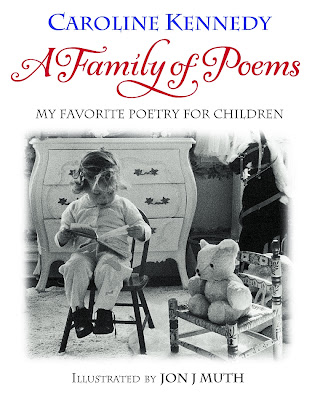By Caroline Kennedy
Publisher: Hyperion Books Copyright: 2005
This Collection of Poems is a great assortment for children to read and enjoy. The poems are categorized into different categories so that students have a sense of what the topic of the poem they are reading is.
Reading Level: 4th and up
Suggested Delivery: Read Aloud, independent read
Vocabulary: linnet, perches, aspen, extremity, trodden, impassable, erroneously, and posies, boughs, abash
Electronic Resources: http://www.cbsnews.com/stories/2005/12/07/earlyshow/living/parenting/main1103165.shtml This website has an interview with Caroline Kennedy and her love of books and why she decided to write this book.
http://www.time.com/time/magazine/article/0,9171,1098929,00.html Background information about Caroline Kennedy is really useful for the students to know who the author is and why she wrote this book.
Activities to Increase Comprehension:
Before reading: Have the students be aware of poetry, the structure of it and the different forms of it. Some students might not be familiar with poetry and therefore might not like or understand when reading this collection. Making them aware before they read about poetry will make reading more enjoyable and meaningful.
After reading: After students are done reading a poem have them analyze what the poem was about, have them fill out a graphic organizer about the poem identifying what point of view the poem is written from, what the poem is about and what kind of poem it is. Students can also write their own poems that they think will fit into one of the categories in the book, or make their own collection of poems like the ones in this book.


































